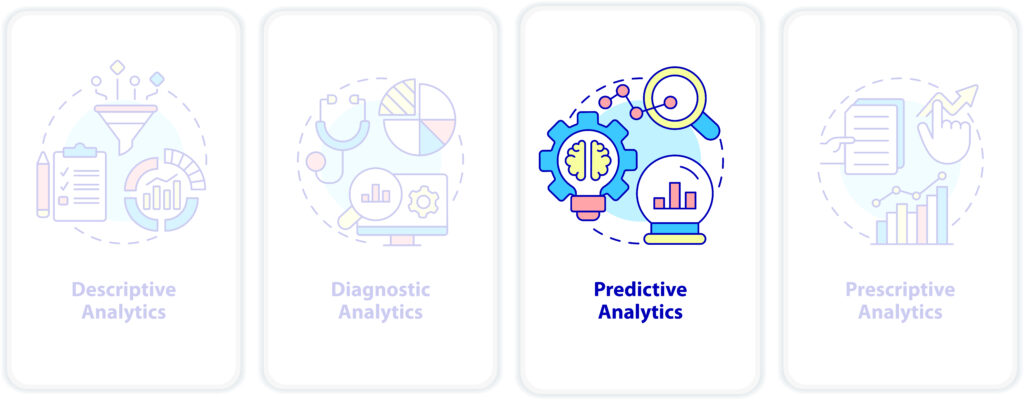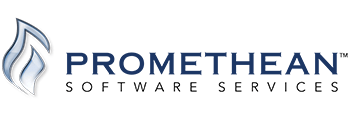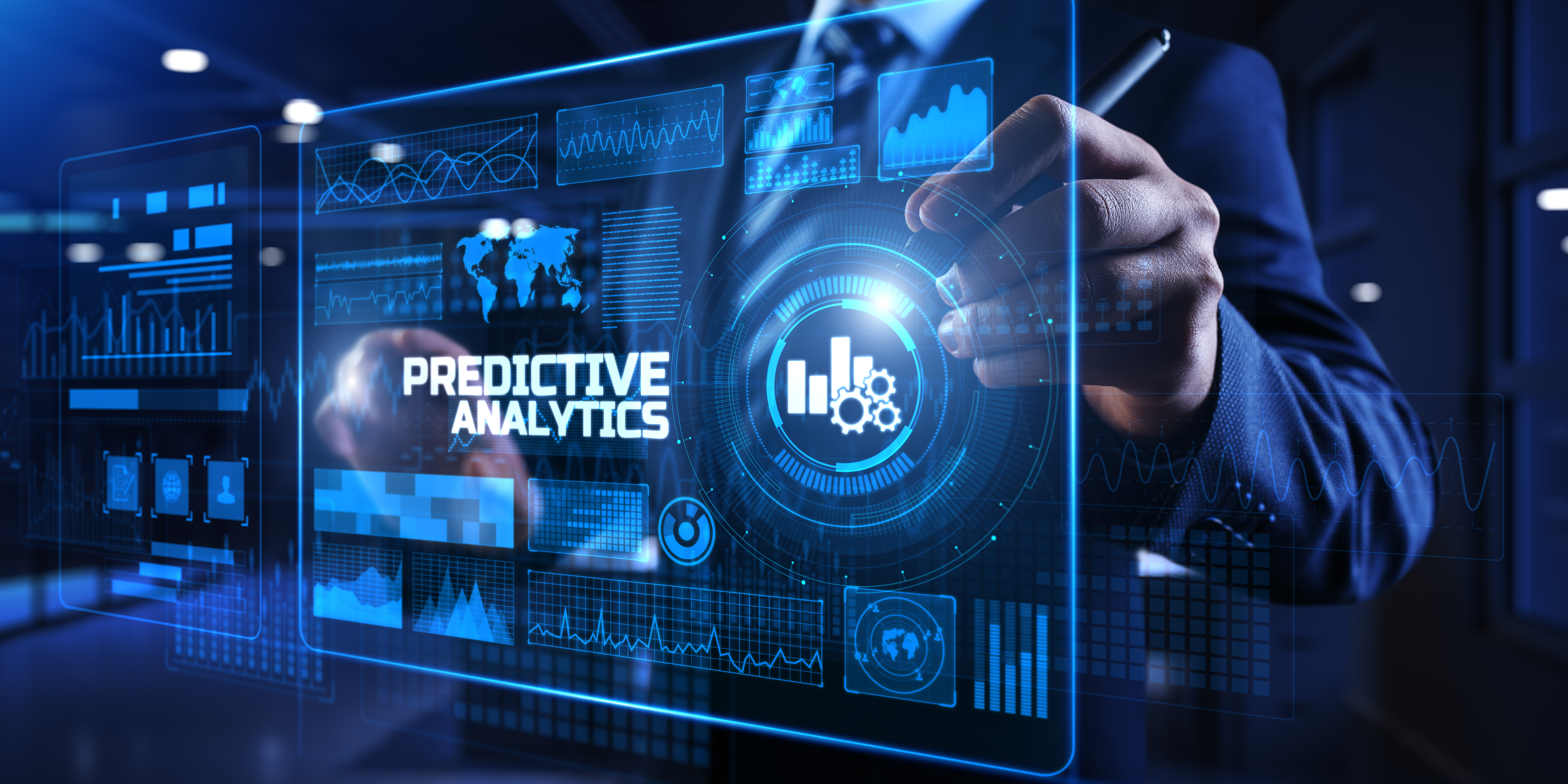Previously, we discussed how to find out what has happened (Descriptive analytics) and then we got to understanding why it has happened (Diagnostic analytics). It’s time to explore the process of finding out what might happen. Predictive analytics refers to the mathematical methods used in predicting possible future values. Examples include calculating what sales will be next week, predicting visitor counts to websites next month, what inventory will be used this week, etc. The methods of analyzing these questions are the same, in that you arrive at answers by building mathematical models. You can think of a mathematical model as a bespoke equation that describes the dynamics of values. The process of building models is heavily dependent on Descriptive and Diagnostic analytics; past data tunes your model thus obtained from Descriptive analytics, and the independent variables are inferred from Diagnostic analytics. There is a lot of nuance to be found in mathematical model building, and thus has a wide range in complexity dependent on the level of accuracy desired.
Techniques of Predictive Analytics
Mathematical model building for predictive analytics is a very dense subject. For simplicity and to see its effectiveness for a few examples I will only consider two different types of mathematical models; linear regressions and moving averages. These form a good base to consider because more complicated models are expanded versions of these two examples.
- Linear Regression: This is also known as a line of best fit. What this does is given a set of data (usually in a pair of a value at a time) linear regression seeks to find a line that minimizes the distance of the data points to the line. The standard form of the line is V = m * t + b where V is the value, m is the slope, t is time and b is the y-intercept. This is done by tuning the slope and y-intercept so that the distance is minimized. Once values for m and b are found, finding the future value of V is simply plugging the future time t into the equation. A side note: most values are linear in smaller time scales so this equation will hold for most systems in small time scales. That is to say choosing a small enough time scale means this equation should be approximately true, but trying to extrapolate larger time scales from this will decrease the accuracy significantly (unless the system you are modeling is linear). The best way to check this is to plot the actual values against the predicted values and see the range of validity.
- Moving Averages: Moving averages are very simple to implement and easy to expand upon. As the name suggests a moving average involves taking an average over specified previous time frame. As an example, take the average of the last 3 weeks of sales and use this value as an approximate for the following week’s sales. There is a level of tuning that comes with this as well, finding a time window that gets to a level of accuracy desired can be difficult. This method, however, is very useful for values that have a lot of small fluctuations but have larger trends that vary much slower. It is also easy to expand upon by multiplying by a scaling constant or by adding different weights to your averages. Each level of added complexity gives you more variables to tune for greater accuracy.
Any mathematical model for predictive analytics, including those mentioned above, will be informed by two key factors; how frequently the values are needed for decision making and how fast the data is changing. How frequently you are making business decisions around your value will inform how the model is built; you don’t want your model to have only one data point you are drawing insights from; frequent monitoring of this type of analytics is recommended for the best results. Data collection, as mentioned in previous articles, is key, and is determined by how thorough one would like to be. Data will be constantly changing and business owners will need to adapt to survive in the current state of supply chain issues. These changes in data will require data collection for building your models for the analysis. It is important to keep in mind that the amount of data you have available informs the model you are building.
No matter the model you end up using, comparing the actual to the predicted value should always be done. To insure the model is functioning as efficient as possible, the error should always be calculated and monitored. This is best seen by plotting actual and predicted on the same plot or by plotting the error as a function of time.

Benefits of Predictive Analytics
Predictive analytics has the easiest case to be made for its usefulness. Being able to predict future values gives you insights that allows you to prepare ahead of time. This changes your strategy from reacting, to planning, which allows for more time to prepare, and more time to optimize.
Some of the key benefits of predictive analytics include:
- Improved decision making: Predictive analytics can help businesses of any size make informed decisions by providing insights into future trends and outcomes. This can be especially helpful in areas of manufacturing, finance, and marketing where accurate predictions can have a significant impact.
- Increased efficiency: By predicting future trends and outcomes, businesses can optimize their operations to increase efficiency and reduce waste. For example, predictive analytics can be used to optimize supply chain management, reduce maintenance downtime, and improve workforce planning.
- Cost savings: Predictive analytics can help businesses save money by identifying areas where they can reduce costs or increase revenue. For example, predictive analytics can help businesses identify customers who are at risk of attrition and implement targeted retention strategies tailored to their needs.
- Improved customer experience: Predictive analytics can help businesses personalize their interactions with customers by providing insights into their preferences and behavior. This can lead to improved customer satisfaction and loyalty.
- Competitive advantage: By using predictive analytics, businesses can gain a competitive advantage by identifying and responding to trends and opportunities faster than their competitors.
Overall, predictive analytics can help businesses make better decisions, increase efficiency, save costs, improve the customer experience, and gain a competitive advantage.
Difficulties with Predictive Analytics
The key assumption of predictive analytics is that the future is some function of the past. Unpredictability is the bane of predictive analytics. When anomalous events occur, it can leave you in a tricky situation where you are reacting once more, all while having to reevaluate the model. These are the moments where emphasizing predictive analytics is what might happen, emphasis on might. The future is fickle in its predictability and this is one aspect that makes predictive analytics hard.
Predictive analytics also requires a lot of math and testing. The examples provided, linear regression and moving averages, are the starting point when it comes to the math. If you find these are not working to a level desired, there is an ocean of math you can dive into to improve at the cost of simplicity. Each new model comes with assumption and technicalities that can leave your head spinning. A lot of the time models breaking down are not noticed until after a lot of testing has occurred. Testing in its own right, takes significant time to collect the data.
The time to test, difficult math and inherent unpredictability may dissuade many from ever taking up the task of predictive analytics. However, the benefits speak for themselves. If these hurdles can be overcome, then what is gained far outweighs the complications.
What Predictive Analytics looks like in practice?
- Identify values you want to predict. This is usually done with diagnostic analytics.
- Establish the frequency at which values are needed for business decisions.
- Find the rate at which data is changing. This can be done with descriptive analytics.
- Identify the independent variables. These are usually found with diagnostic analytics and will greatly inform your model you build.
- Choose what model you are using and identify the parameters you will need to fit for. Between the options listed above this comes down to if your data looks linear or is there some other shape the data follows. If the data looks linear then use a regression, if there is another shape use a moving average.
- Fit for the identified parameters.
- Test and repeat steps four through six and update as needed.
Conclusion
A business is only as strong as its numbers. While that can seem like a herculean task to figure out and unravel, predictive analytics allows business owners to get ahead of any potential short coming and fully utilize the data that is gathered.
While the techniques may seem out of reach, it is always recommended to reach out to specialists to help in this endeavor. In these articles we constantly recommend collecting data and encourage you in finding ways to make your data work for you. The quality of your information effects the quality of your decisions, and through predictive analytics you get the highest quality of decision making information.
Not sure where to begin with Predictive Analytics? Contact us to learn how utilizing your data can help you predict business trends, improve business decisions and gain a competitive advantage.

